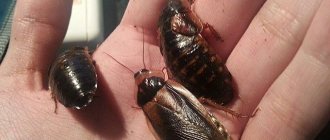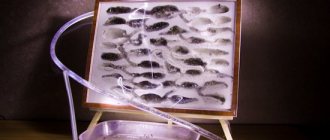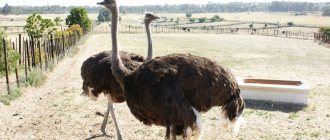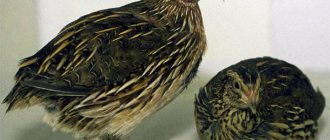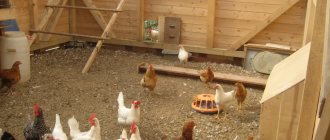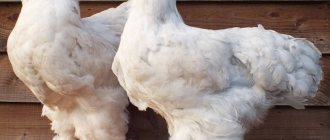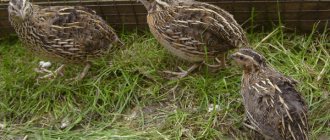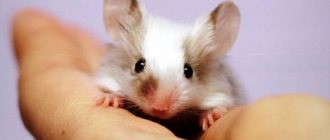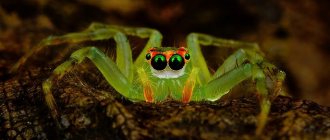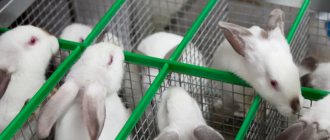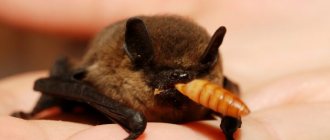Recently, the Indian duck has become one of the most popular birds in households and farming. All thanks to its unpretentiousness to growing conditions, feeding and productive characteristics - high egg production, as well as tasty, tender and healthy meat. Muscovy ducks do not require special care and can lead productive lives in almost any conditions.
The history of the musk breed
Indians domesticated Indians in Mexico and South America. After European colonization, the breed was brought to Europe and gained great popularity among many poultry farmers.
The breed was not popular in Russia for a long time. The situation changed only in the 80s of the 20th century, when a large batch of musky ducks was brought from Germany to the USSR.
Today, Indian ducks are one of the most popular breeds in Russia and neighboring countries.
Note! Some people consider the turkey duck to be a hybrid of a turkey and a duck, but this is not true. Despite a certain external similarity, the musk breed has nothing to do with turkeys.
Basic description and characteristics of the bird
All Indian ducks are externally similar, although their habits, egg production, growing time and feeding methods may differ slightly depending on individual characteristics. Next, we will tell you everything that is important to know about Indian ducks.
Appearance
Indo-ducks have a large body and wings, and a rather short neck. A characteristic feature is fleshy red growths above the beak and in the eye area. The color of the feathers depends on the breed of Indian duck, but most individuals are distinguished by dark or brown plumage with small white spots. Birds tolerate life well on land and love to splash in the water.
Duck character
Indian ducks have a very calm, quiet character, although they can become more aggressive when there is a lack of food and free space. They quickly get used to the pen and are fed and cared for.
You can raise indo-ducks with other birds, for example, chickens or geese - the likelihood of conflicts will be minimal.
Breed performance
The productivity of the breed is calculated by meat and eggs. Each option has its own characteristics:
- Egg production of the breed. If properly bred, an adult produces 110-120 eggs per year. Each egg is medium in size and weighs 60-70 grams. Egg laying is a cyclical process - Indian ducks lay eggs, but at the beginning of summer and at the end of September, molting occurs, which lasts 1-2 months, and then the process repeats. Young ducks begin laying eggs at 5-6 months of age, but they will produce no more than 8 eggs per month. But at the age of 12 months, their egg production will increase to 13-15 eggs per month.
- Amount of meat. The weight of an adult drake is 4-5 kg, and the weight of females is 3-4 kg. The bird actively gains weight up to 3 months, then growth slows down. On average, the breed grows for 6-9 months, and after that further growth stops. When raised for meat, turkey ducks are slaughtered at the age of 3-4 months. At this moment they reach 2.5 - 3 kg of duck and up to 4 kg of drake. The maximum slaughter period is up to 5 months - this way the meat will not be tough. In order for the ducks to grow large, it is necessary to keep the pen clean and feed it in a timely manner.
How long does a bird live?
The life expectancy of indo-ducks in the wild is 7-8 years, and at home - 15-20. In the household, keeping indo-ducks and laying hens usually lasts 3 years and 6 years for drakes. After this age, productivity decreases and the ducks are disposed of.
Natural enemies of waterfowl
In the wild and in the home, the musk breed has many enemies. The Indian duck is hunted by such animals as foxes, weasels, ferrets, martens, raccoon dogs, large crows, owls, and hawks. Some species of large fish may be waiting for small ducklings in ponds.
Note! At home, they can be killed by large dogs or aggressive cats.
How to determine the sex of birds
There is an unpleasant but reliable way to determine the sex of small ducklings. To do this, you need to pick up the duckling, place your thumb on the edge of the cloaca and move it up a little.
As a result, the genital organ should be exposed in the form of a fold measuring 3-4 millimeters. If you find such a genital organ, it’s a male, and if you don’t find it, it’s a female.
There are also indirect methods to determine the sex of birds:
- males grow faster than females and have larger breasts and wings;
- males have an elongated neck, while females have a more rounded neck;
- Drakes have feathers at the end of their tail that form a ring;
- the drake has a low, hoarse cry, and the female has a quiet trill.
Conditions of detention and care
Provide the Indian duck with proper living conditions, as well as proper care. This is the only way she can grow quickly and have good egg production.
Premises requirements
To keep musk ducks, you do not need to build premises with a stove or heating, especially electric. It is enough to insulate the house with straw, hay, wood and other wood materials. The main thing for this bird is comfort and cleanliness.
The size of the room should be selected taking into account 3 birds per square meter. In addition, it should be well ventilated. If the owner keeps several dozen birds, then, if possible, it is better to place them in separate families, as in the wild.
Nutritional Features
The diet of the adult and younger generation of musk ducks is practically the same. The only difference is in the food supply, since ducklings in most cases require crushed food. Indo-ducks can be fed:
- grain crops - wheat, barley, corn;
- wheat bran;
- greens - beet leaves, meadow grass;
- boiled potatoes;
- grated beets;
- cottage cheese;
- carrots;
- bone meal;
- fish and meat waste;
- bread yeast;
- elements containing calcium - chalk, granite chips, crushed shells, table salt.
Indo ducks' favorite treats are kitchen scraps, milkweed and dandelion greens, corn, beet tops and boiled potatoes.
How to raise turkey ducks at home
To raise birds, you need to create a pen with a poultry house. In order for birds to grow healthy, it is necessary to feed them food and feed, and also do not forget to give water. Other important points:
- It is recommended to keep females, young animals and males in the pen (even if you do not plan to breed chicks). The presence of one or two drakes increases the egg production of laying ducks.
- When breeding the breed, it is necessary to make a small fenced area or a large cage where the Indian duck will be kept with the chicks. When the ducklings grow up, they can be sent with their mother to the main pen.
Note! Indian ducks get along well with other poultry. Therefore, they can be kept in the same pen along with chickens, ducks and geese.
Which breed to choose for breeding
There are two main categories of Muscovy ducks - wild and domestic. For breeding, it is recommended to purchase domestic ones, since wild ones have more freedom-loving dispositions and are less productive in meat and eggs.
Overview of the main breeds of Indian ducks for home keeping and breeding:
- Black Indians. The feathers are predominantly black with small splashes of green and purple on the back. Most black Indian ducks have brown eyes.
- Black and white Indian ducks. They are similar to birds of the previous breed with the only difference being that there are small white spots on the chest, head and neck. Eye color is light brown.
- White Indians. These birds have all the feathers white, and the paws and tip of the beak are yellow. This breed does not have a greenish tint. The eyes of white Indian ducks are usually gray-blue.
- Brown wild turkeys. The duck's body is a deep brown color, but the tips of the feathers may have white or black spots. Small white spots may also appear on the head and neck.
- Blue wild ducks. The feathers of the bird have a rich blue color with a slight green tint. The breed is rare, so these ducks are often kept at home as decorative birds.
Note! The last two varieties of the breed produce fewer eggs and meat.
How to breed Indo ducks
Indo-ducks are bred in a similar manner to other poultry. Next, we will consider the breeding processes in more detail.
How many Indian ducks do you need for one drake?
Indo-ducks should be distributed at the rate of “4-5 females per 1 drake.” In this case, you can get the maximum percentage of fertilized eggs.
Theoretically, it is possible to keep indo-ducks without males, but in this case, egg production will decrease by 20-30%.
And without mating individuals, it is impossible to obtain fertilized eggs for renewal or reproduction of the herd.
Hatching ducklings with a hen
The easiest and cheapest way to breed at home is to incubate the offspring with an indo-duck hen.
For these purposes, it is recommended to make a separate queen cell, where it is necessary to install a nest using dry leaves, sawdust and hay.
Fertilized ducks gradually lay eggs there, and when their number reaches 10-12, the hen will begin to hatch them.
Key points regarding hatching ducklings:
- The room temperature should be between 18-30 degrees. In this case, the percentage of hatched ducklings will be maximum.
- There should always be food and water in the room. Please note that water is used not only to quench the thirst of the birds, but also to wet the eggs.
- Hatching of the eggs lasts approximately 30-35 days, after which small ducklings are born. At first, they should be fed with crushed corn or grain, cottage cheese and eggs. Next we will consider this issue in more detail.
Hatching chicks in an incubator
Indo-ducks can also be bred using an incubator. An incubator is a small electrically powered device that maintains the required temperature for ducklings to hatch.
Before adding eggs to the incubator, they must be sorted. To do this, you need to choose medium-sized eggs without external defects.
Large eggs will remain in the incubator longer for 1-2 days - this can negatively affect the further development of the ducklings.
From small eggs, ducklings will hatch earlier than expected and this can also negatively affect the further development of ducklings. According to statistics, no more than 10% of birds survive from such eggs.
Additionally, an inspection should be carried out for microcracks, foreign inclusions and various anomalies using ovoscopy.
Important points:
- The incubation period until the ducklings hatch is 35 days.
- The temperature in the room should be at least 30 degrees, and in the incubator - within 38.5 degrees. Therefore, it is recommended to breed indo-ducks in summer or late spring.
- It is advisable to have a humidity control function in the incubator. Eggs must be turned by hand at least 6 times a day.
- It is advisable to have another useful function in the incubator - automatic egg turning. If there is no such function, then the eggs must be turned manually every 2 to 4 hours.
Keeping and caring for chicks
In order for ducklings to grow up healthy, it is necessary to remember the rules of care. Breeding, maintaining and caring for turkey chicks after hatching looks like this:
- Ducklings should be kept in the queen cell for the first 20-30 days of life until they become stronger. If the birds were bred as a brood hen, the mother should be with them all this time.
- In the first days of life, daylight hours should be at least 18 hours. Therefore, it is recommended to use artificial lighting in the queen cell.
- The chicks should be fed finely crushed corn and other grains, boiled eggs, and cottage cheese. You should also add a little chalk, shell rock, carrots, chopped meat or fish waste to the diet.
Common mistakes when raising ducks
Most novice poultry farmers make the same mistakes when breeding turkey ducks on a farm or at home.
The four most common mistakes are:
- Using small or too large eggs for the incubator. In this case, there is a high risk of chicks dying during incubation. But even if a few ducklings survive, they will be weak and frail.
- When using an incubator, the eggs do not turn over or get wet. In this case, the ducklings will die during hatching with almost 100% probability.
- Breeding chicks without constructing a queen cell. Indian ducks will feel uncomfortable if there are many other birds in the room.
- Old eggs are used for incubation. The older the eggs, the less likely they are to hatch ducklings.
Plucking
If you plan to slaughter poultry en masse, you should think about buying a feathering machine. This unit allows you to process more than fifty carcasses in an hour. Its operating principle is simple: in the middle of the “boiler” a centrifuge rotates, against which the bird hits. When struck at high speed, the feathers fall out, saving owners from unnecessary trouble. If you do not have experience in slaughtering birds, it is unlikely that you will be able to pluck such a quantity of birds even in a day.
If you keep the bird in small quantities, then it is quite possible to do it manually. Remember that when slaughtering a bird during fledging, you will have to deal with a large number of “blocks” (stumps), (small tubes firmly seated in the meat that grow on the carcass in the plural) which will undoubtedly increase the labor intensity of the process several times. .
It is recommended to start plucking two hours after slaughter. This is done so that the fat has time to harden, and the skin becomes less elastic and more resistant to injury.
Most often, people use the scalding method; it is very effective, but it shortens the shelf life of the carcass. When using scalding, it is recommended to consume the carcass within one to two days. But there are also dry and hot methods, although they are not so popular.
Scalding involves pouring boiling water over the carcass, covering it and standing for 15 minutes, after which you can safely start plucking the bird. The sequence of actions is as follows:
- prepare a large container that could accommodate a duck of the appropriate size;
- prepare a container for garbage and, if you plan to collect fluff, a fabric bag for it;
- heat about four liters of water to 80 C;
- put the carcass in a vessel, add water and cover with a lid or thick cloth, leave for 20 minutes;
- Let the duck cool for about ten minutes and you can get to work.
You should start with the feathers of the wings and tail; you need to pull them out carefully, with a sharp movement directed towards the growth of the feather. After removing large feathers, only small feathers and down will remain on the carcass, which are quite valuable and suitable both for sale and for your own use.
Due to its properties, duck down is often used to make pillows and other textiles. Such feathers need to be pulled out in the direction opposite to their growth, grabbing them in small bunches. After all the feathers have been plucked, it is advisable to lay them out on a paper surface and dry them. Such feathers should be stored in fabric bags in a dry room.
Dry plucking
When choosing dry plucking, you need to remember that this type of processing can damage the skin of the carcass. If the skin is torn, it will be almost impossible to ensure high-quality plucking, not to mention the fact that the duck will lose its presentation and will only be suitable for cutting. In order to start dry plucking, you will need the bare minimum of preparations: prepare a container for garbage and a fabric bag for down, lay a film on the floor or other flat surface, place the duck on it and start plucking.
Otherwise, the process is no different from scalding.
Hot plucking:
- soak the fabric bag in boiling water, then remove and squeeze well;
- place the carcass in a bag, tie tightly and leave for 20 minutes;
- iron the plumage with a hot iron through the fabric;
- remove from bag and pluck.
Once you've finished plucking the duck, you can move on to the next step.
Rules for keeping ducks
When keeping any breed of Muscovy ducks, you should adhere to a number of rules - let's look at the main ones.
Poultry house and its arrangement
Indo-ducks are more heat-loving birds than chickens. Therefore, it is recommended to make the house more insulated for them.
It is recommended to make the height of the poultry house 1.5-2 meters, and there should be 1-2 windows inside it at a height of 1 meter above the ground. Quadrature is calculated according to the rule - for 1-3 birds you need 1 square meter of free space.
To heat the room in winter, it is recommended to use a heater or electric furnace. You should also place several perches indoors, as well as drinking bowls and feeders.
Attention! Be sure to make small vents in the windows that will be used for ventilation.
What to make bedding for Indian ducks from
It is recommended to make bedding on the floor based on sawdust, wood shavings and straw. Sand is recommended to be used only in the warm season.
The height of the litter in winter is at least 20 centimeters, and in the rest of the year - at least 10 centimeters.
If the bedding is damaged by mold, it must be urgently replaced, since the fungus negatively affects the health of the ducks.
Basic principles of feeders and drinkers
When keeping domestic turkeys, you must not forget about the rules for installing feeders and drinkers in pens and poultry houses:
- Any containers can be used as drinking bowls - shallow bowls or old frying pans. You can also make a drinking bowl from a 10-liter tank or cut it out of wood. The only important rule is that the drinking bowl should be made at the rate of “0.5 liters of water per 1 turkey.”
- You can also use any containers as feeders. However, wooden structures are best - they will not be damaged by birds' beaks. The dimensions of the feeder should be such that 250-300 grams of feed per bird fit inside.
Attention! It is recommended to use not one large, but several small feeders and drinkers. In summer they are placed outside, and in winter - inside the house.
Arrangement of the nest
Indian ducks are skeptical about new nests, so it is recommended to make them in the fall - over the winter the birds will get used to it and begin to hatch eggs willingly. One nest is enough for 2-3 ducks.
They make a nest from boards or plywood, and the shape of the nest should be cubic (length, width, height - 40 centimeters each).
Boxes and cardboard boxes can be used as a temporary nest. Nests are placed at a height of 25-30 centimeters. The lighting in the nest should be dim and shaded so that the birds feel calm.
You should place plenty of hay or wood shavings inside the nest for the duck's comfort.
Wing clipping
Breeding indo-ducks also involves trimming their wings, as otherwise the birds may fly away. Only one wing needs to be processed using sharp scissors.
Pruning is done until the tubular cavity of the feather appears. In adulthood, the treatment does not need to be carried out (in its youth, the Indian duck gets used to the fact that it cannot fly).
Place for walking Indian ducks
A space should be fenced off near the poultry house where the birds will live during the warm season. For fencing, it is recommended to use a mesh 1.5-2 meters high.
It is better to cover the ground with a thin layer of sand, sawdust and wood shavings. At night, the feathered birds must be driven into the poultry house.
In winter, it is not recommended to let indoor ducks outside, but you can lightly ventilate the house for 20-30 minutes.
Profitability of breeding musk ducks
Many livestock breeders, farmers and household owners know that breeding indo-ducks can be a very profitable business if done correctly. The meat of this bird is valued for its taste characteristics and dietary benefits.
This breed of bird does not require special care and is not picky about feeding. They do not need to be constantly monitored; they are completely independent and can move to and from a pond without the participation of their owners.
Poultry house equipment does not require significant costs, especially if you make feeders, drinkers and other amenities yourself. The only costs are grain feed and vitamins. In any case, the money spent will soon pay for itself and bring in a good income.
According to experts, the profitability of breeding turkey ducks for meat is about 70%.
Poultry diet
The diet of an Indian duck must be composed correctly so that the bird grows healthy. The amount of food and water depends on age and season.
Principles of watering
There should always be drinking bowls with water inside the poultry house and outside, and the water supply should be renewed at least once a day.
The daily water intake depends on the age of the bird:
| Age | Water norm |
| 0-7 days | 100 ml |
| 7-14 days | 150 ml |
| 14-21 days | 250 ml |
| 21-28 days | 400 ml |
| Further | 500 ml |
Diet for ducklings
It is not recommended to feed Indo ducklings with compound feed due to the weak stomach of the birds.
Optimal diet for different ages:
- Ducklings aged 0-6 days should be fed cottage cheese (15-20 g), boiled eggs (15-20 g) per head. Starting from 4 days, you can additionally feed fine corn grits (20-25 g) per day per head.
- At the age of 7-19 days, you should give 60 g of grain or corn grits per day per head, additionally a little cottage cheese, chalk with shell rock. We remove dairy products from the diet.
- Gradually the diet is increased. By day 20, baby ducklings should eat 100 g of grain or corn flour, additionally a little bone meal, chalk and shell rock.
- From 20 to 29 days you need to start accustoming them to feed for small ducklings. Feed is given mixed with grains 6 times a day, and there should be about 200 g of food per duckling
- From day 30, you can feed ducklings exclusively with mixed feed. At first, you should give 120-130 g, gradually increasing the volume to 250-300 grams.
Attention! Hatched ducklings should be fed 3-4 times a day, although young animals at the age of 1 month can be fed 2 times a day.
Diet for adult birds
It is recommended that the diet of an adult duck be based on mixed feed, and the turkey should be given 250-300 grams of feed per day. Instead of food, you can give grains, bone or fish meal, green and succulent food, chalk and shell rock.
Feeding should be carried out 2 times a day at equal time intervals. It is not recommended to feed birds after sunset, as they lose their appetite in the evening.
Seasonal nutrition of the breed
At different times of the year, Indian ducks need to review their diet. Particular attention should be paid to the amount of vitamins and minerals.
Depending on the season, nutrition has the following differences:
- In winter, it is recommended to increase the diet of turkey ducks by 10-20%. The extra calories will help birds survive the winter successfully.
- In spring and summer, it is recommended to include greens in your diet, which are rich in vitamins and beneficial microelements. This will improve the bird's immunity.
- In autumn it is recommended to increase the content of microelements. You can buy bait or use chalk, shell rock and greens.
Slaughter process
The slaughtering process has its own difficulties, but after familiarizing yourself with all the nuances, you can be well prepared and approach the matter with all responsibility.
Before you slaughter a bird, you need to prepare it properly. For 13-15 hours she is placed in a closed room, without food, but with drink; it is important to provide light in the room during this time. Such measures allow you to clear the duck’s esophagus of food residues. After cleaning, the duck must be placed in a special cone, which will hold the body and wings of the bird with its walls, and the head and neck will be free for manipulation.
Slaughter procedure:
- use a cone to immobilize the bird;
- take her head, pull down until her neck is stretched as far as possible;
- feel the carotid artery in the neck;
- leave the carcass to bleed for 10-15 minutes;
- remove the carcass from the cone.
In the village, most often an ax and a tree stump are used to kill ducks; after separating the head, the carcass is also hung up. This method is also effective and is at least not inferior in terms of slaughter speed.
Carrying out forced molting
At the beginning of summer and at the end of September, turkey ducks begin their molting period. At this time, egg production decreases.
To shorten this period, poultry farmers carry out so-called forced molting using hormonal drugs or changing diet.
To use hormonal medications, be sure to consult a veterinarian.
We recommend using the method of changing your diet. This is the safest and most humane way.
The following is a “recipe” for accelerated molting of individuals:
| Deadlines | Actions |
| 1 day | Remove food, leave water and light |
| Day 2 | Remove food, water and light |
| Day 3 | Give 50 g of grain and water, turn on the light in the poultry house from 8 to 11 o'clock |
| 4 day | Do not provide feed or water, but turn on the lights in the house between 8 and 11 a.m. |
| From 5 to 19 days | Grain – 100 g, water – constantly, light – from 8 to 12 o’clock |
| From 20 to 30 days | Compound feed - 100 g, water - constantly, light - from 8 a.m. to 2 p.m. |
| From 31 to 40 days | Compound feed - 130 g + 20 g grass meal, water - constantly, light - from 8 a.m. to 4 p.m. |
| From 41 days | Feed, water and light - according to the usual schedule |
Note! Before carrying out forced molting using any of the previously described methods, you should consult a veterinarian.
Most popular diseases
Indian ducks have strong immunity, so they rarely get sick. However, they may still encounter some diseases:
- Down eater. It is a small insect that feeds on particles of skin and feathers of birds. It does not pose a serious danger, but it worsens the health of the Muscovy duck. The presence of a parasite can be determined by its behavior - the duck becomes restless and often bites its feathers.
- Inflammation of the mucous membrane of the goiter. Occurs when fed with low-quality food, as well as when there is a lack of vitamin A in food. When the disease occurs, the goiter increases in size, and the bird stops drinking water and eating food. Sometimes a little green liquid may come out of your mouth.
- Pecking eggs. The syndrome often occurs when there is a lack of sulfur or calcium in the diet. By pecking, the bird tries to restore the balance of minerals. The syndrome is not too dangerous, but can cause the bird to destroy all its eggs.
Elimination of poultry diseases
You can treat diseases yourself or after consulting a veterinarian.
Treatment options:
- To treat a down-eater you will need sulfur, ash and sand. These components must be mixed in equal proportions. And place the basin with the resulting mixture in the poultry house. Birds will take sand and ash baths on their own. This way the mites won't spread too much throughout the musky's body.
- In case of inflammation of the mucous membrane of the goiter, it is recommended to completely change the food. It is also recommended to include carrots, boiled eggs or any other foods high in vitamin A in your diet.
- When pecking eggs, you need to buy mineral bait based on sulfur and calcium. Complementary foods should be given according to instructions in short courses.
Vaccination
Caring for turkey ducks does not include vaccination, since birds rarely suffer from bacterial or viral infections. The exception is bird flu - if an outbreak of this disease occurs, vaccination should be mandatory. After all, the disease can thin out more than 50% of the brood up to the complete destruction of the herd.
Vaccination methods depend on the type of vaccine - usually two shots are given, and the vaccine provides immunity for 6-12 months. Vaccination can only be carried out by a veterinarian.
Disease Prevention
To prevent birds from getting sick, you need to feed them high-quality food with a high content of minerals and trace elements. It is recommended to periodically update the substrate in the poultry house and outside to prevent mold from growing there.
The water should be changed at least once a day, since pathogenic microorganisms often settle in old water.
Meat characteristics
The meat of musk ducks is unusually juicy and tender. In many respects it is superior to chicken and turkey. It has a delicate taste and pleasant aroma (as opposed to the specific smell of other waterfowl).
Compound
Indo-duck meat also stands out favorably from its relatives in its composition. The valuable properties of the product are due to:
- B vitamins;
- vitamins A, C, D, E, K;
- richness of minerals (potassium, iron, zinc, copper, magnesium, fluorine, phosphorus, sodium);
- Omega-3 and Omega-6.
Beneficial features
Consumption of meat products with such an abundance of vitamins, macro- and microelements has a beneficial effect on the overall health of a person.
It leads to:
- improving skin;
- restoration of vision;
- normalization of the reproductive system;
- formation of bone and muscle tissue;
- less fatigue;
- restoration of metabolic processes;
- removal of carcinogenic substances.
In addition, the meat does not contain cholesterol, which makes this product possible for people with heart disease and diabetics.
Contraindications and possible harm
Let's continue to consider turkey meat, its benefits and possible harm. So, such food does not pose a threat to a healthy person.
Contraindications for use in nutrition may be:
- arthritis;
- indigestibility of the product;
- diseases of the digestive tract;
- diseases of the body's urinary system.
Pros and cons of breeding the breed
Indo-ducks from the point of view of poultry farming have both pros and cons. Both small private farms and large poultry farms are engaged in breeding.
Advantages and disadvantages
disease resistance, high level of offspring survival;
unpretentiousness in drinking and eating;
high egg production, large eggs;
tasty, valuable dietary and nutritious meat:
calm, accommodating character.
not too fast growth and weight gain;
mediocre taste of eggs;
when kept in small houses they become aggressive.
Seasonal cultivation
In practice, seasonal rearing of turkey ducks in a private backyard for meat is most often used.
How this approach works and why it is so popular:
- the poultry farmer purchases eggs and “hatches” them using an incubator or laying hen;
- then the bird is fattened. At the 3rd month of life, the ducklings reach a weight of 2-3 kg and the duckling is sent for slaughter;
- short-term seasonal rearing allows you to avoid many problems - no need to build a large or capital poultry house, lower feed consumption, and so on.
Permanent content
Indo-ducks can also be raised by permanent keeping. In this case, you can get a lot of eggs and meat. At the same time, you need to understand that constant maintenance at home is not very cost-effective due to various factors:
- Duck eggs are not very popular on the market (compared to chicken eggs). Therefore, it will be more difficult for the poultry farmer to look for markets.
- With constant maintenance, you will have to spend a lot of money on feed and building poultry houses. Therefore, permanent maintenance will be justified only in the case of either a very large or very small brood.
Meat and eggs for yourself and for sale
To always have fresh duck eggs on the table, 5-6 duck eggs are enough. You can also take 1-2 drakes so that they periodically fertilize females to replenish the herd.
Ducklings can be raised until they are 3-4 months old, after which they can be sent for meat. If necessary, you can scale this approach to produce more eggs and meat.
Excess products can be put up for sale to generate additional profit.
Why doesn't the male turkey trample the females?
In a normal healthy state, the male must trample the females. Refusal from this activity may be caused by low sexual heat, which is associated with seasonality, for example, autumn or winter. This can also be affected by the drake being overweight. A malfunction in the body can be caused by dysfunction of the testicles or the absence or deficiency of vitamin E in the body.
In this case, special attention should be paid to feeding the drakes; it should be balanced and rich in all nutrients. If a family of Indian ducks was formed recently, then the lack of mating process may be caused by fear of each other. From all of the above, we can conclude that growing, keeping, breeding and selecting a drake for a tribe is a responsible and very important process on which the genetic potential of future offspring will depend
